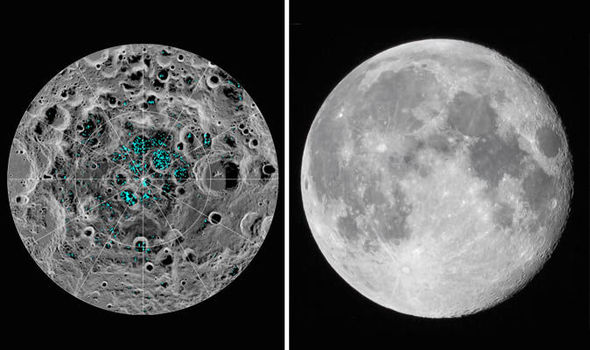For the first time, scientists have directly observed definitive evidence of water ice on the moon’s surface, U.S. space agency NASA has said.
Most of the newly found water ice lies in the shadows of craters near the moon’s polar regions, where sunlight never reaches and the warmest temperatures never reach above minus 250 degrees Fahrenheit (about minus 157 degrees Celsius), NASA said in a statement.
“These ice deposits are patchily distributed and could possibly be ancient,” the NASA said.
“At the southern pole, most of the ice is concentrated at lunar craters, while the northern pole’s ice is more widely, but sparsely spread,” NASA added.
Previous observations found possible signs of surface ice at the lunar south pole, but these could have been explained by other phenomena, such as unusually reflective lunar soil.
In the latest study, scientists used data from NASA’s Moon Mineralogy Mapper (M3) instrument to confirm the presence of solid ice on the moon.
M3 collected data that not only picked up the reflective properties of ice, but was able to directly measure the distinctive way its molecules absorb infrared light, so as to differentiate between liquid water or vapor and solid ice.
“With enough ice sitting at the surface — within the top few millimetres — water would possibly be accessible as a resource for future expeditions to explore and even stay on the Moon, and potentially easier to access than the water detected beneath the Moon’s surface,” NASA said.
“Learning more about this ice, how it got there, and how it interacts with the larger lunar environment will be a key mission focus for NASA and commercial partners, as we endeavor to return to and explore our closest neighbor, the Moon,” NASA added.
The findings were published in the Proceedings of the National Academy of Sciences on Monday. (Xinhua/NAN)

